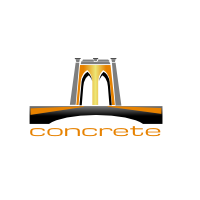Ordering Concrete? Tips to Build It Right
 |
| Ordering Concrete? Tips to Build It Right |
Whether your concrete need is as small as needed for fixing cracks and holes in the wall, building a patio, paving, pathway, or as large as a construction of a high-storey commercial building, the first step to begin is by ordering the exact volume of concrete needed. It comes as the next point that how the ordered concrete should be delivered to your work site. While most projects are measured in square feet, when you place an order for concrete, it is done in cubic yards. Measure the dimensions of the site to determine the right volume of concrete needed.
First you need to multiply the length of the project by width, then multiply the resultant figure by depth (meaning thickness), and divide it by 27 to learn the amount of concrete needed in 'cubic yards' unit. Finding it difficult to calculate on own? There are many websites featuring online concrete calculator. Or you can always contact your local concrete supplier company so that a concrete specialist can visit the site in person and help you determine the right amount of concrete mix needed for your project; this approach will help you avoid under-ordering and over-ordering scenarios. Many concrete suppliers offer on-site assistance right from determining the needed volume, onsite concrete mixing and application to refurbishment of the concrete structures. Now when you know how much concrete you will need, the very next step is to decide how to get the job done. Concrete as we all know is a blend of Portland cement, sand, gravel and water. Other aggregates can be added by the supplier company depending on your project specifications.
Why Choose Ready Mix Concrete For All Your Construction Needs
Now, before sharing the 12 time-tested tips to succeed in your construction project, it is worth mentioning here that ordering ready mix concrete London is far better than mixing concrete onsite. Even if you pay a bit more ready mix which is also called ready to lay concrete, it's pool of advantages such as no need of storage space, instant application, faster construction, reduced need of workforce, top-quality and sustainability make it a smarter alternative. Moreover, the concrete supplier companies are catering to any small and large size order of ready mix concrete. So, both DIY residents and contractors can leverage from its many benefits. Simply put, ready to use concrete reduces the work on site, improves the quality and finish of work, and fast-track the project accomplishing.
Top 8 Tips To Prevent Failure In Your Construction Project
- Don't order less than what you need
- Cover concrete using plastic or damp fabric to avoid cracks
- Add colour and additive straighten; or you can reduce curing period
- Concrete mix may need reinforcement of steel bars, wire mesh, etc. to boost strength; consult a concrete specialist to learn more.
- For DIY project, use safety wear to protect eyes, nose and skin from any harmful effects
- Adding more amount of Portland cement can increase the strength of the concrete mix
- If you will need concrete during Christmas or in holiday season, check if the supplier you choose are open during the festive season or not; if yes, it is recommended to schedule delivery in advance. Planning advance will avoid extra charges and all hassles.
- If you will need concrete pumps to transport concrete mix on the site, plan ahead and hire concrete pumps while ordering the mix
Hope these tips will help you order concrete mix the right way!














